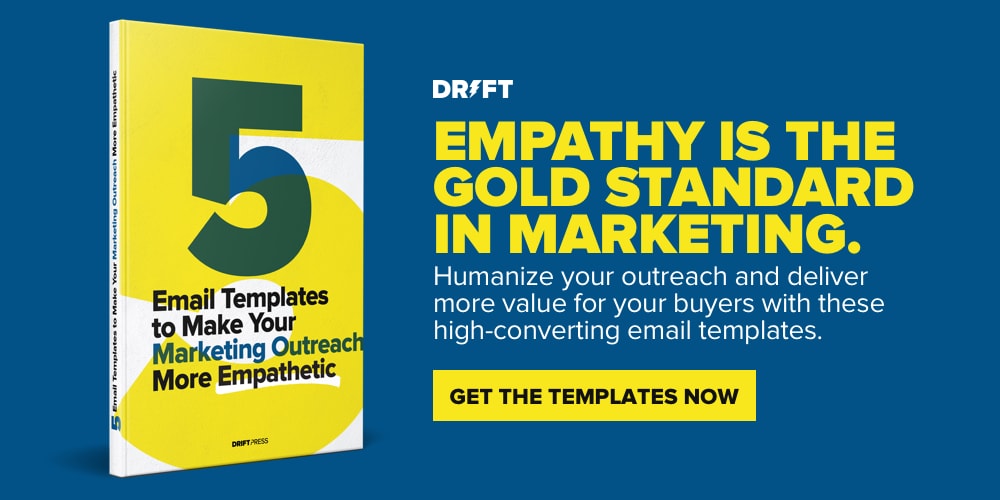So…the world is still in a very unique place.
But there’s one channel that can endure just about anything – no matter where in the world buyers and customers are: Email.
The problem? We’re betting most marketers haven’t gotten creative with their email strategy in months (if not years). Email is also often siloed from other digital channels, which leads to mixed messaging and a disjointed experience. Talk about friction.
The solution? I sat down with Melissa Berger, SVP of Connection Strategy and North American CRM Lead at Digitas to show you how to build a creative email marketing program that excites and delights.
Email Isn’t a Channel. It’s a Strategy.
What percentage of your B2B marketing campaigns relate to presale activity?
Probably most of them.
But your customer spends the majority of their lifecycle after the sale. What happens then?
It’s a funnel to nowhere.
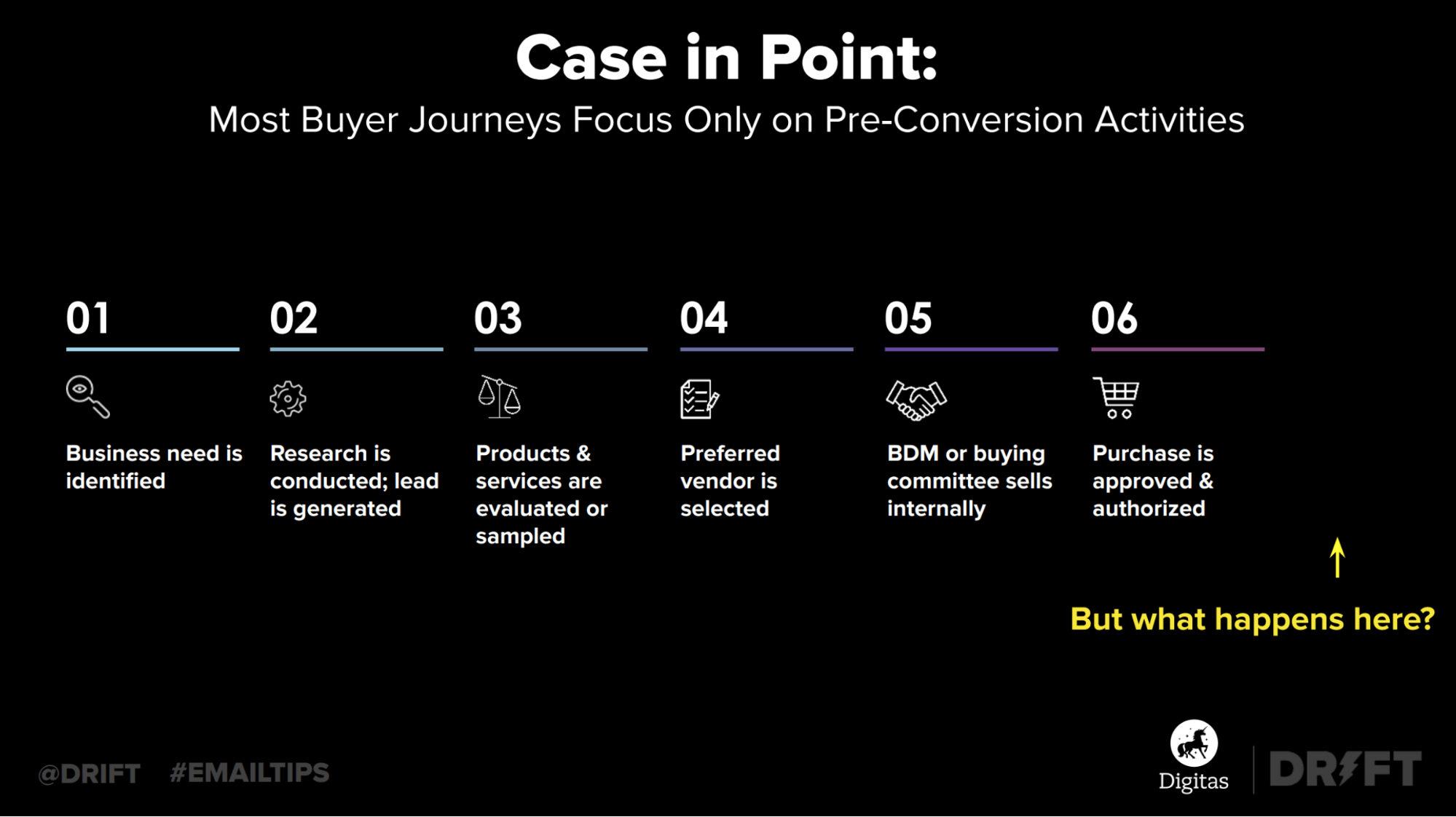
It’s your job as a marketer to make sure that you’re always managing the relationship with your audience – whether they’re prospects or customers. We spend so much time thinking about getting that lead in the door, closing the sale, and giving them all the information they need to make a purchase…but then we abandon them.
It’s actually cheaper to keep a current customer than it is to get a new one. It’s time to make that funnel to nowhere go somewhere.
Think about it this way:
via GIPHY
Imagine if the movie stopped there! Even in real life, once you decide you’ve made a friend, you don’t just stop talking to them. It’s the same thing for brands. Continue the value exchange from the first impression all the way to becoming an advocate for your product.
That means you need to think about the full journey, not just lead gen.
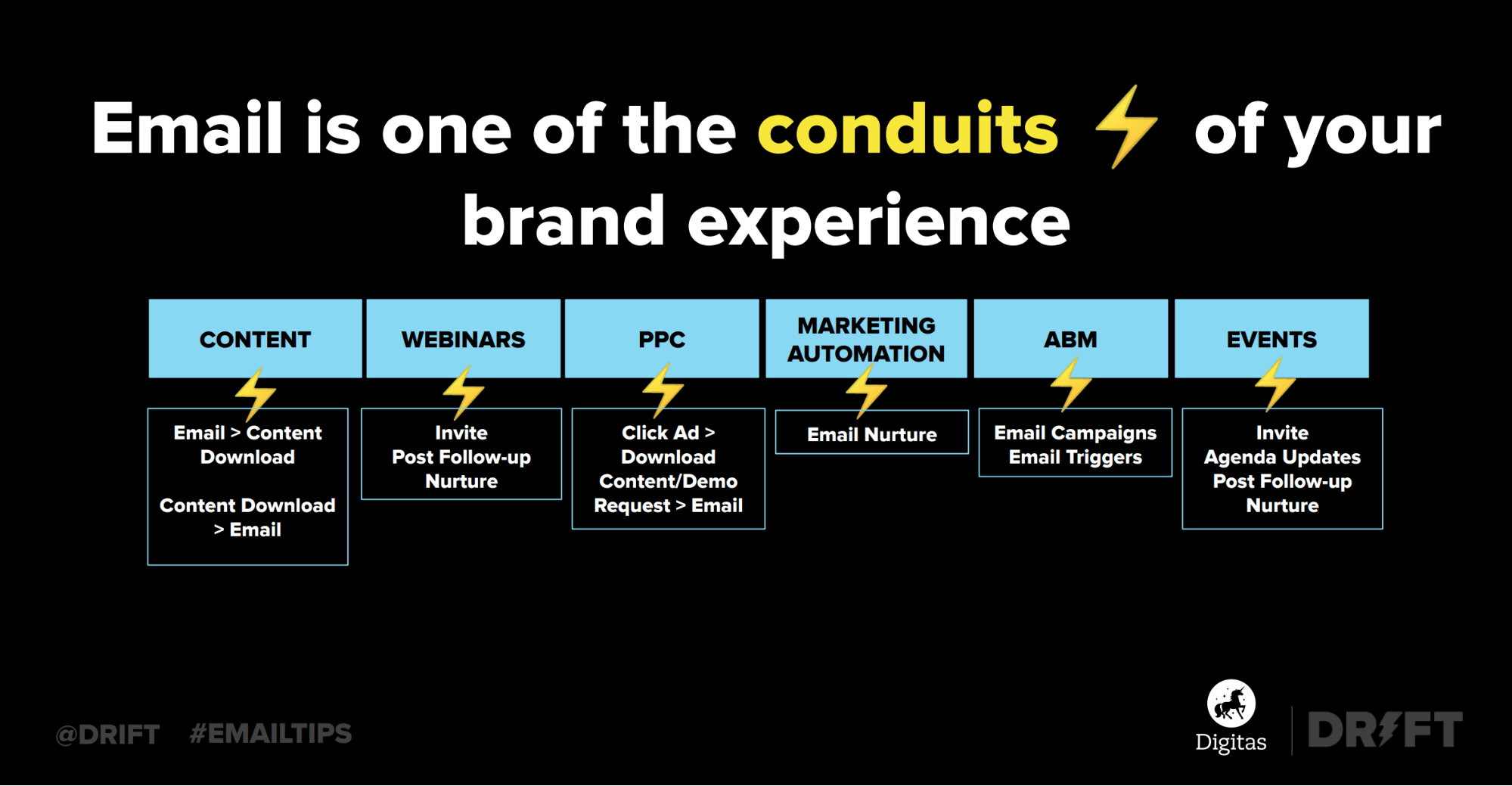
Email isn’t a channel. It’s a strategy.
Rather than focusing solely on expansion, customer marketing and overall relationship building are THE ways to drive your business forward 💰
When you start thinking about email as an ecosystem, everything changes. At Drift, we use an integrated campaign structure. Every quarter, we plan out high-level campaigns and the programs that fit into the campaigns, which then flow into the email, website, and advertising copy.
Everything is consistent. So, how are you taking that content that you just mentioned and making sure that it’s catered to the right channel?
That’s why you need a data-driven approach to marketing.
But where to start?
Where we always start as marketers: Your audience.
Know Your Audience. (No, for Real)
We think about segmentation as this big, complicated thing that’s impossible to implement, but what it really comes down to is: How can you use data to change your email strategy?
It’s all about establishing a repeatable and robust process to optimize along the way. Start small and think about data differently.
Here’s a simple example of a data-driven way to know your audience.
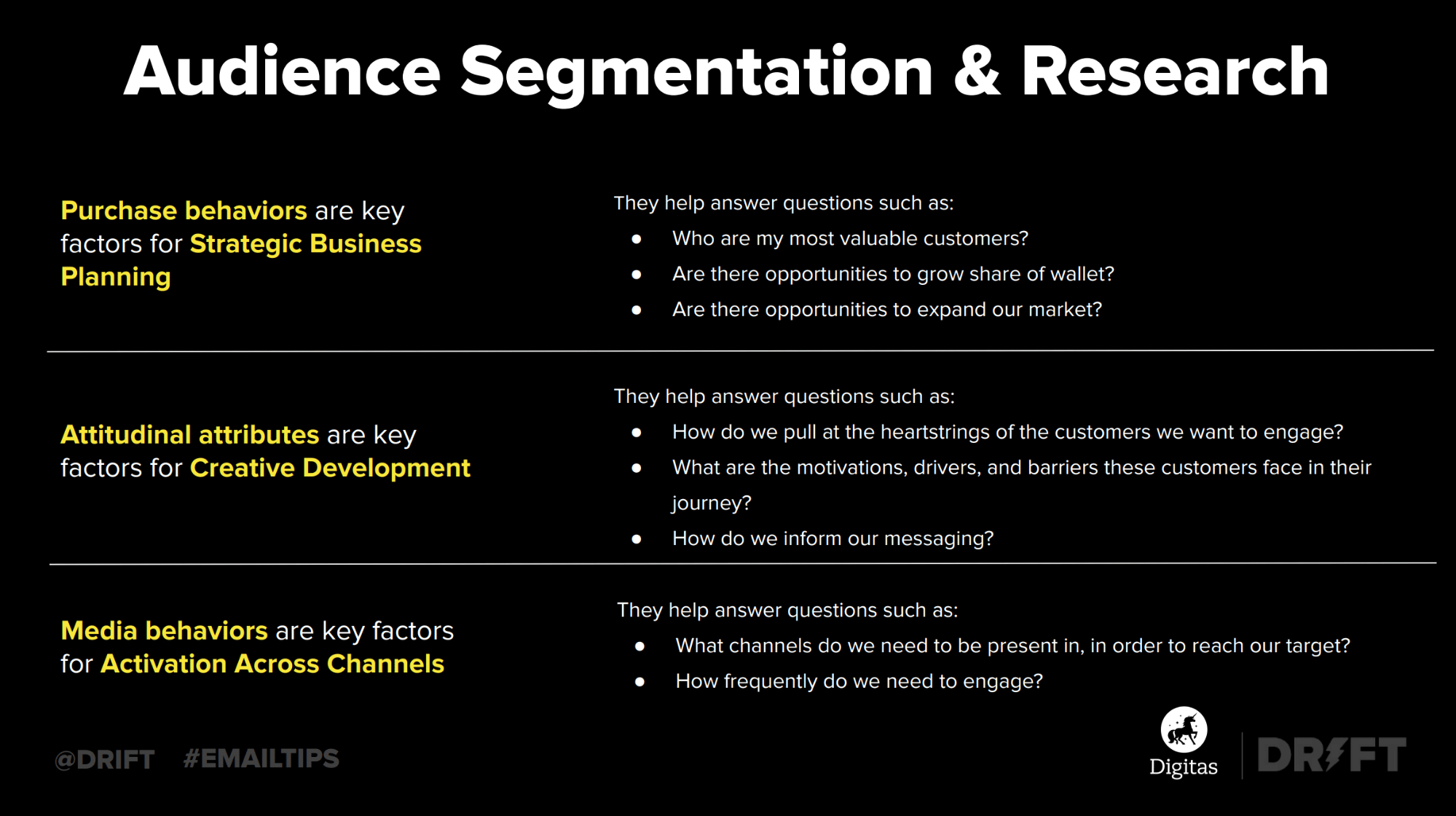
In Marketo, which we use to send all of our emails, we have a simple rule that a person cannot get more than three emails from us in a week.
Small rules like this one improve engagement, customer relationships, and lay the foundation for a real personalization engine. We want the data to become something our customer says, “Oh, that’s interesting. Let me learn more.”
The key to success with data isn’t analytical prowess. It’s empathy.
Empathy is one of the biggest things that we all need right now as people and as brands.
You need to read between the lines to understand what’s really driving your customers. You may know basic firmographic data, but do you know why they signed up for a webinar, or what drew them to a specific feature? Find out more about your customers through:
- Purchase behaviors: What do they buy? How much time does it take them to buy? What other products or tools do they have besides yours?
- Attitudinal attributes: What are their biggest pain points? What do they need? What motivates them?
- Media behaviors: Where do they hang out on the internet? How often do they engage with brands and other people?
You’ll need to put all three together to build a better strategy. But the most important thing is to focus on behavior – because it’s true when they say that actions speak louder than words.
Whether your buying funnel is two steps or 20 steps, your emails (and your content…and everything else!) should match with your funnel. Use this as a template 👇

5 Ways to Create a Conversational Nurture Flow
When you think of a traditional B2B email, it probably feels like someone in a suit is sending you an email to get on a phone call. It feels stale, stodgy, and impersonal.
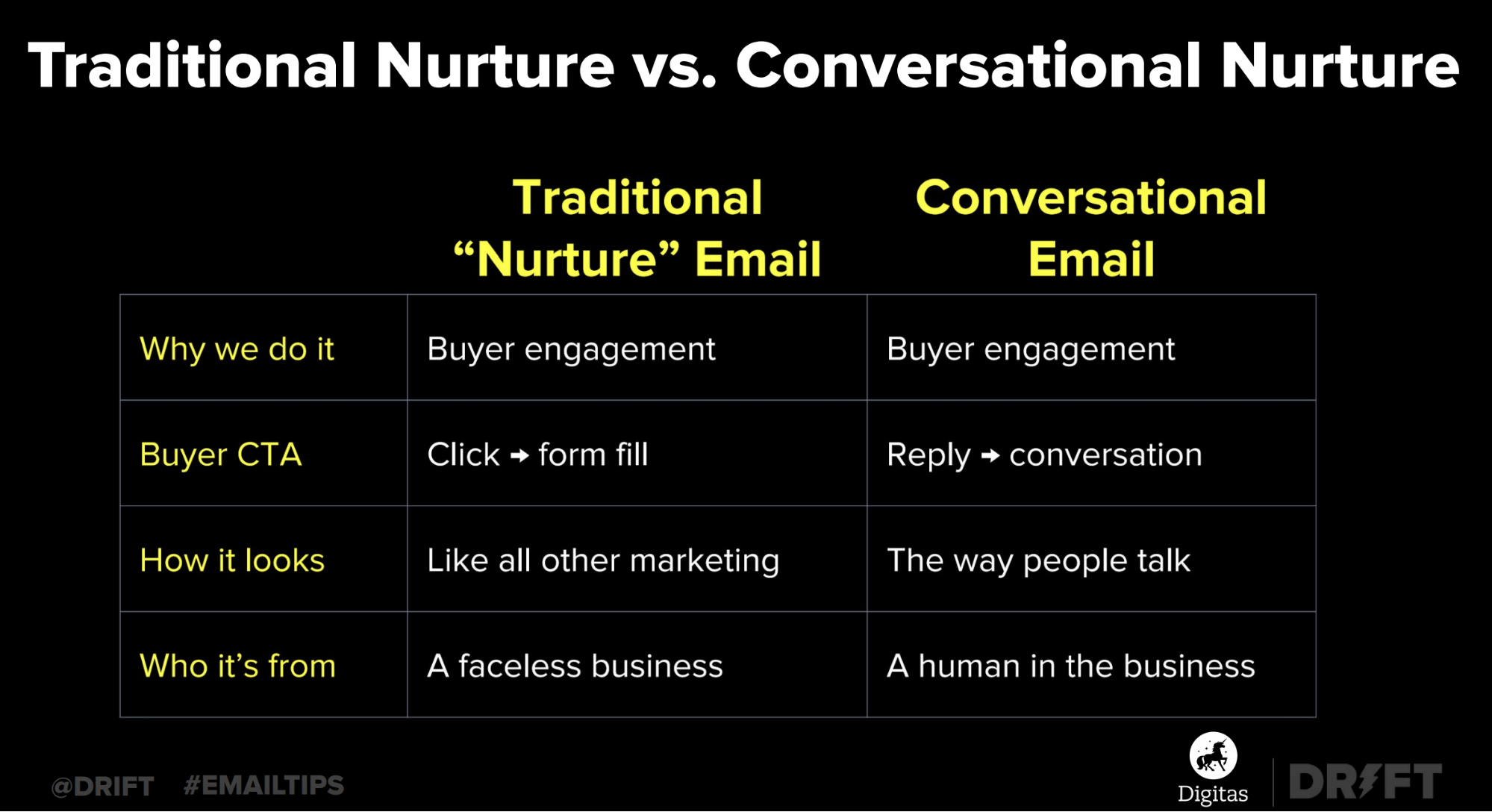
That’s because it is. Traditional nurture flows need to go.
Now, it’s about being a person and building a relationship. We talk a lot about business-to-human rather than business-to-business.
That may seem like a lot more work, but it’s not – here are five ways to shift your nurture flows from traditional to conversational (and trust me, they’ll convert 📈)
1. Make Sure You’ve Got an Awesome Subject Line
Most emails are lucky to get a 3% open rate.
That’s because most emails have boring subject lines. Don’t worry, here’s a cheat sheet of some of the best ones we’ve seen: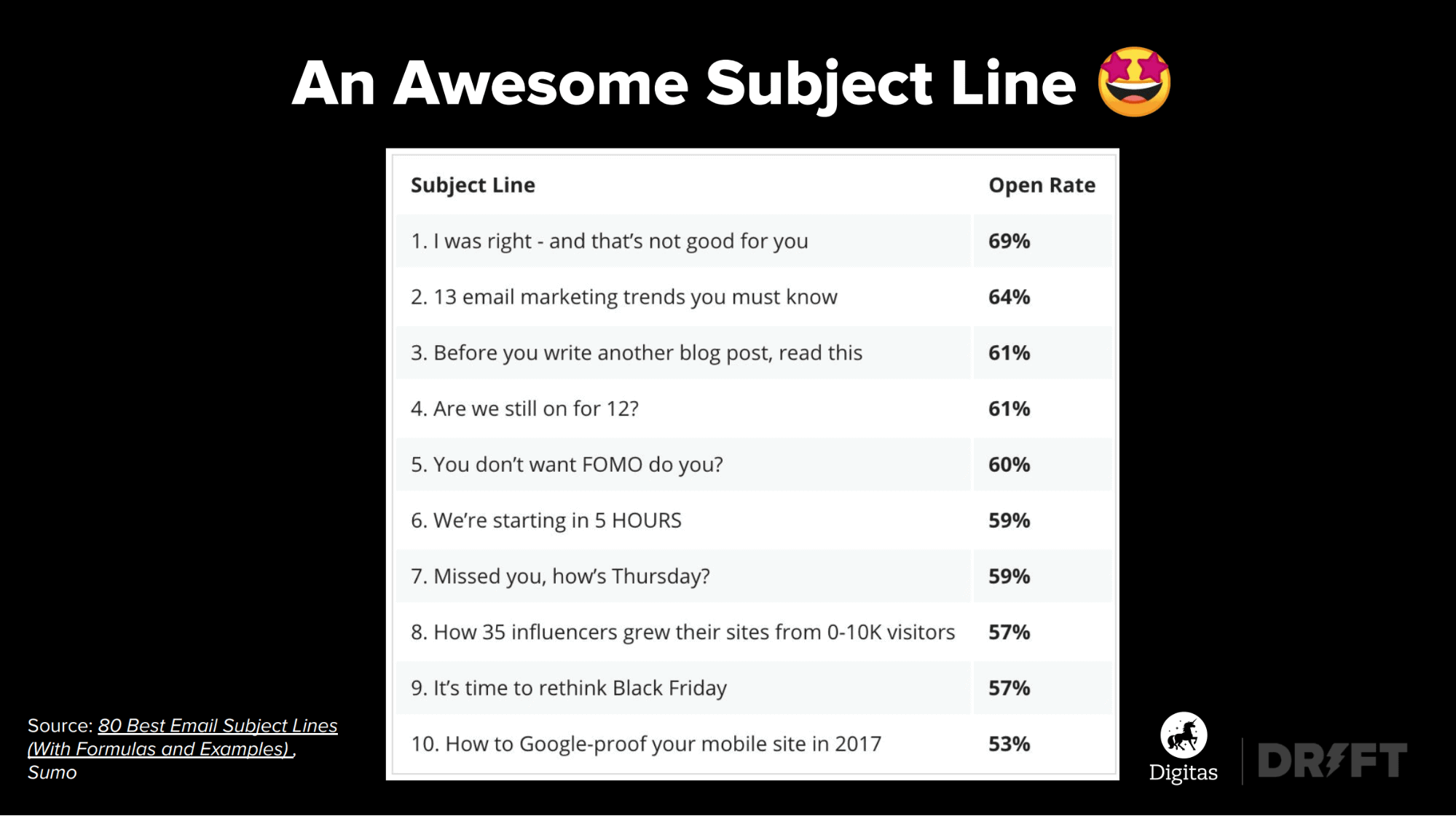
What do these have in common?
- They read like headlines. You have to know what happens next.
- They’re written in the second person (using “you,” to directly address the recipient.)
- They’re short. Most of these are five words or less.
How to find these magic subject lines? Test them. We write at least five subject lines for every email we send, and then we test until we find the right one.
2. Only Send Emails That Are Personalized to Recipients
We’ve been talking about personalization forever, but it really does work.
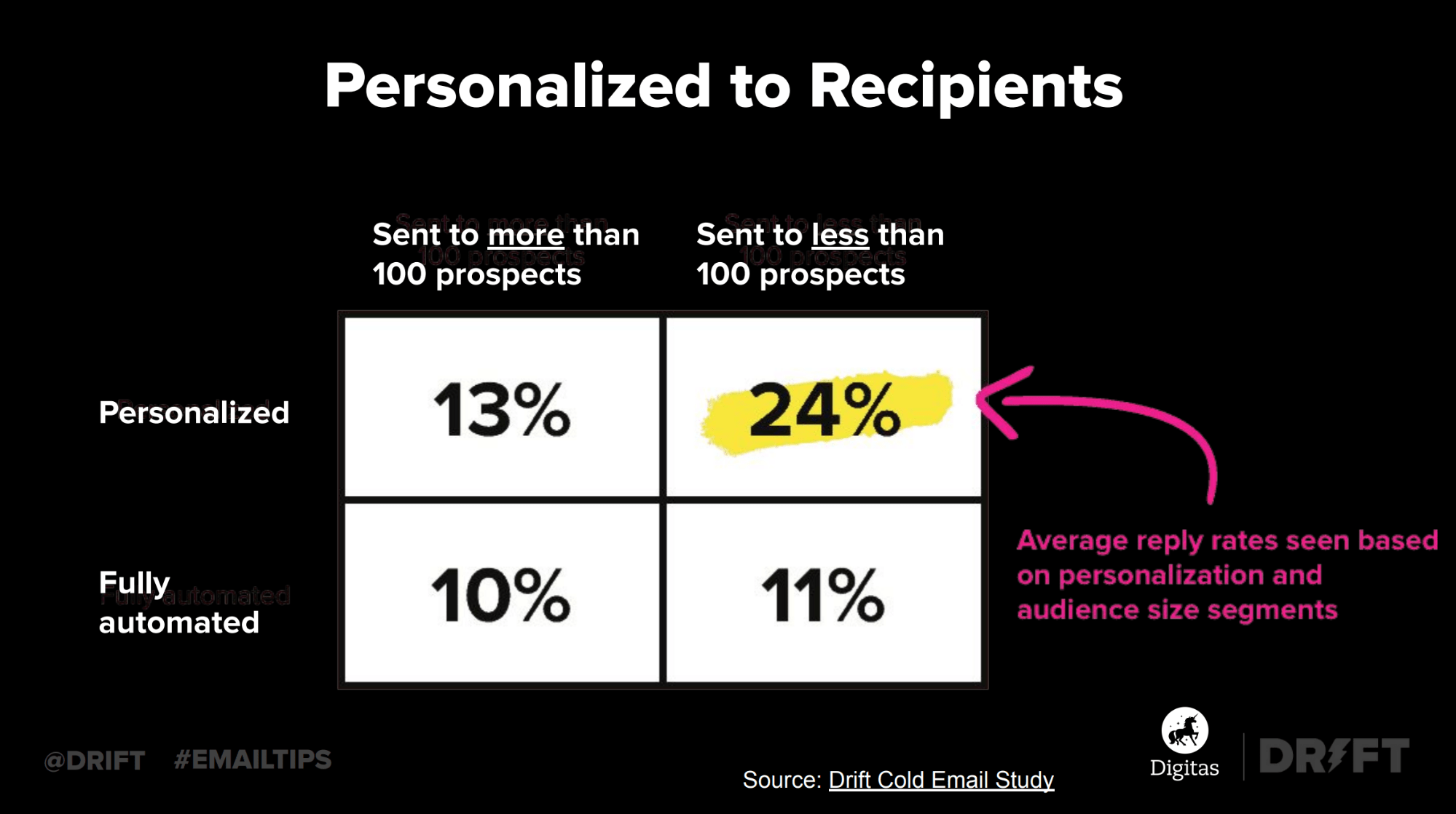
It doesn’t take a lot to catch someone’s eye and make it that much more relevant. (Plus, average reply rates go up from 11% to 24% when you personalize an email.)
Here’s a B2C example from Sephora, a makeup company:
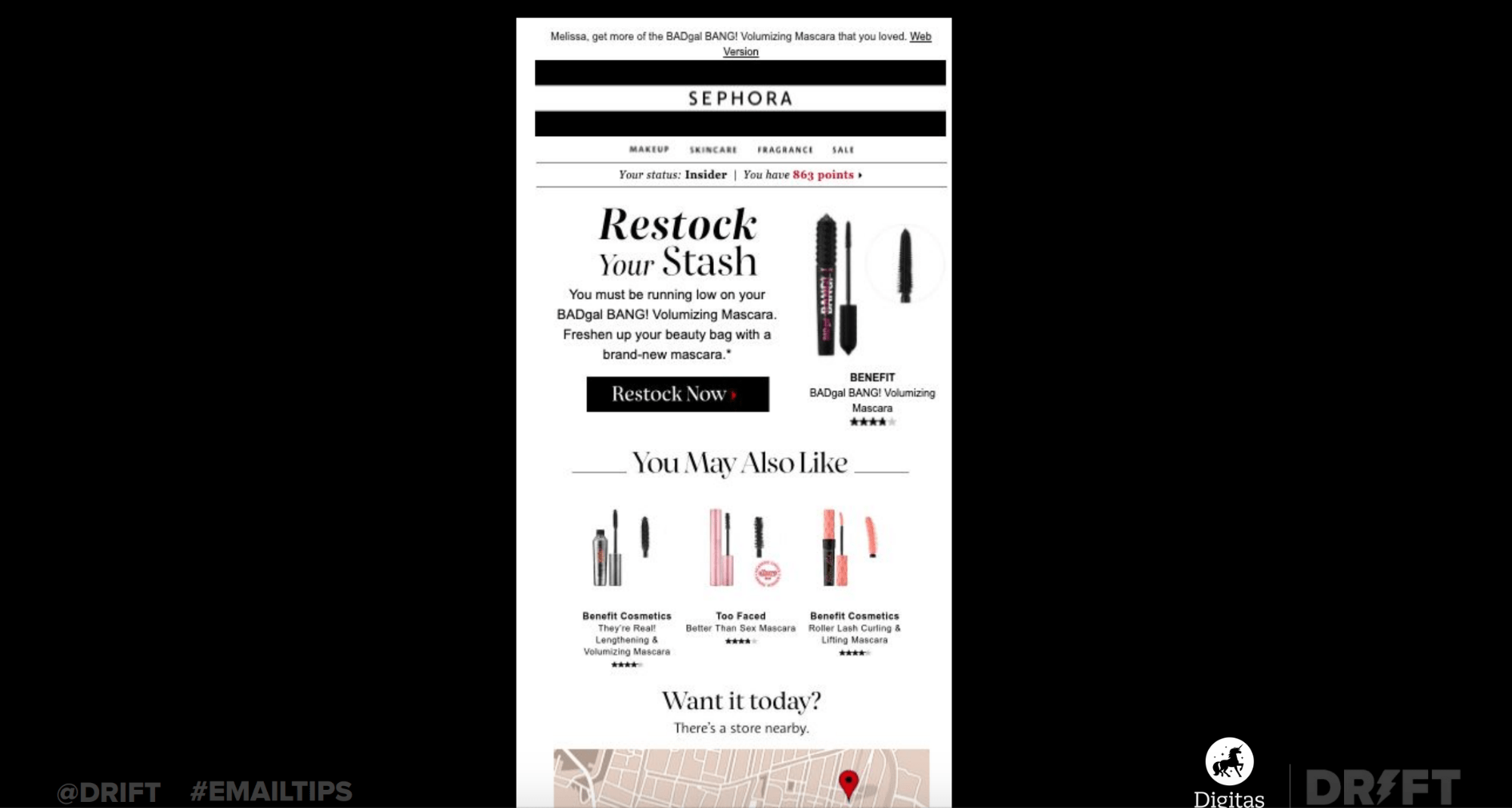
Talk about business to individuals. They’re constantly aware of what you’re purchasing, what’s new you might like based on that behavior, and how frequently you purchase. All of that adds up to an email that feels super relevant to you.
3. Experiment with Plain Text
Plain text is here to stay. It feels so much more personal and interesting. Designed emails have their place, of course, but there are ways you can get creative, even in plain text.
We loved this email from TINYpulse’s Customer Success team:
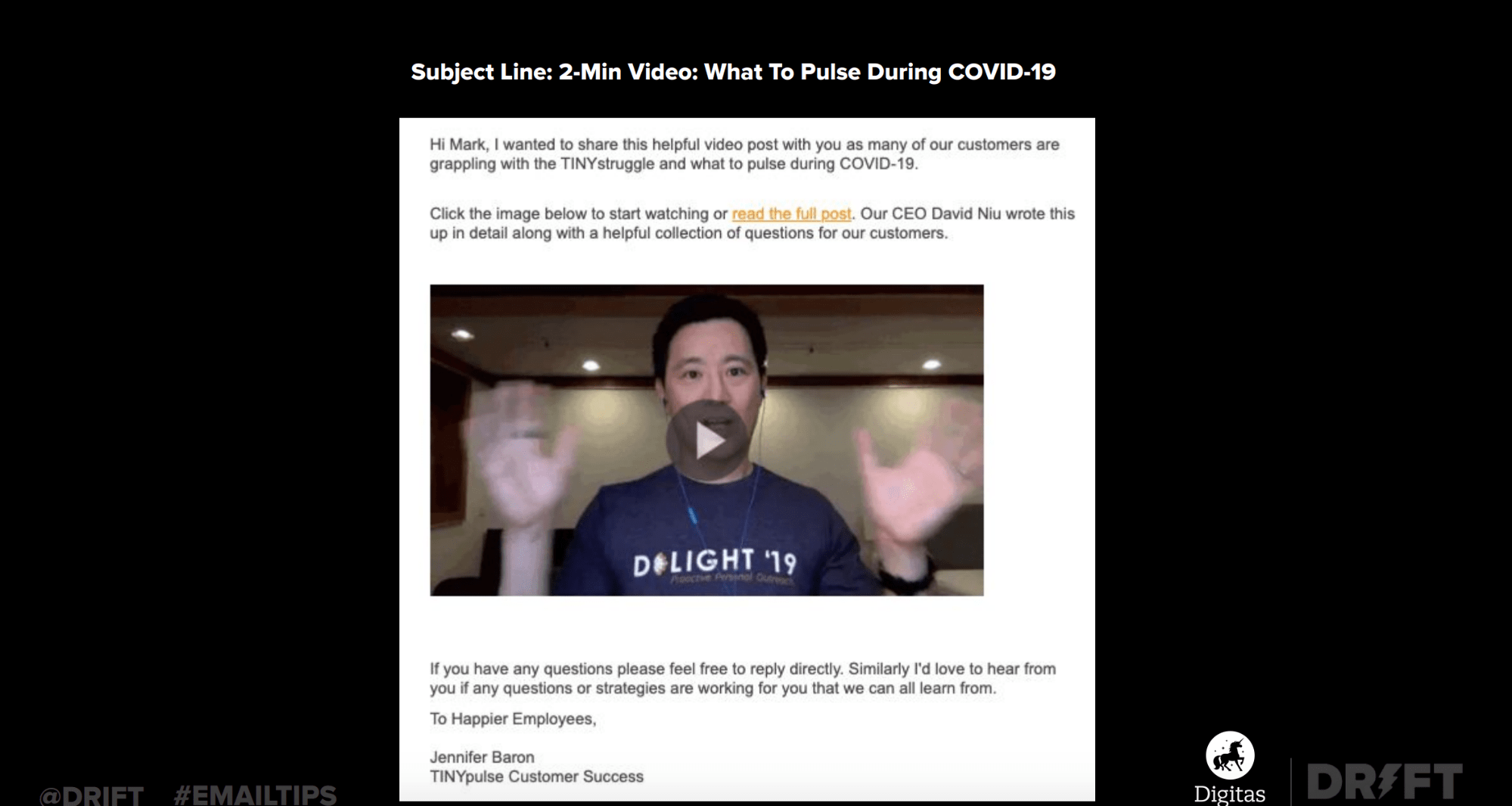
It’s a super personal way to get the message across, from the CEO. Nothing flashy – he’s just in his office – and it got my attention immediately.
Pro Tip: To add video like TINYpulse did, check out how you can record Drift Videos right from Gmail.
Here’s one we did at Drift that got 29.6% open rate and a 17.6% click-through rate 👀
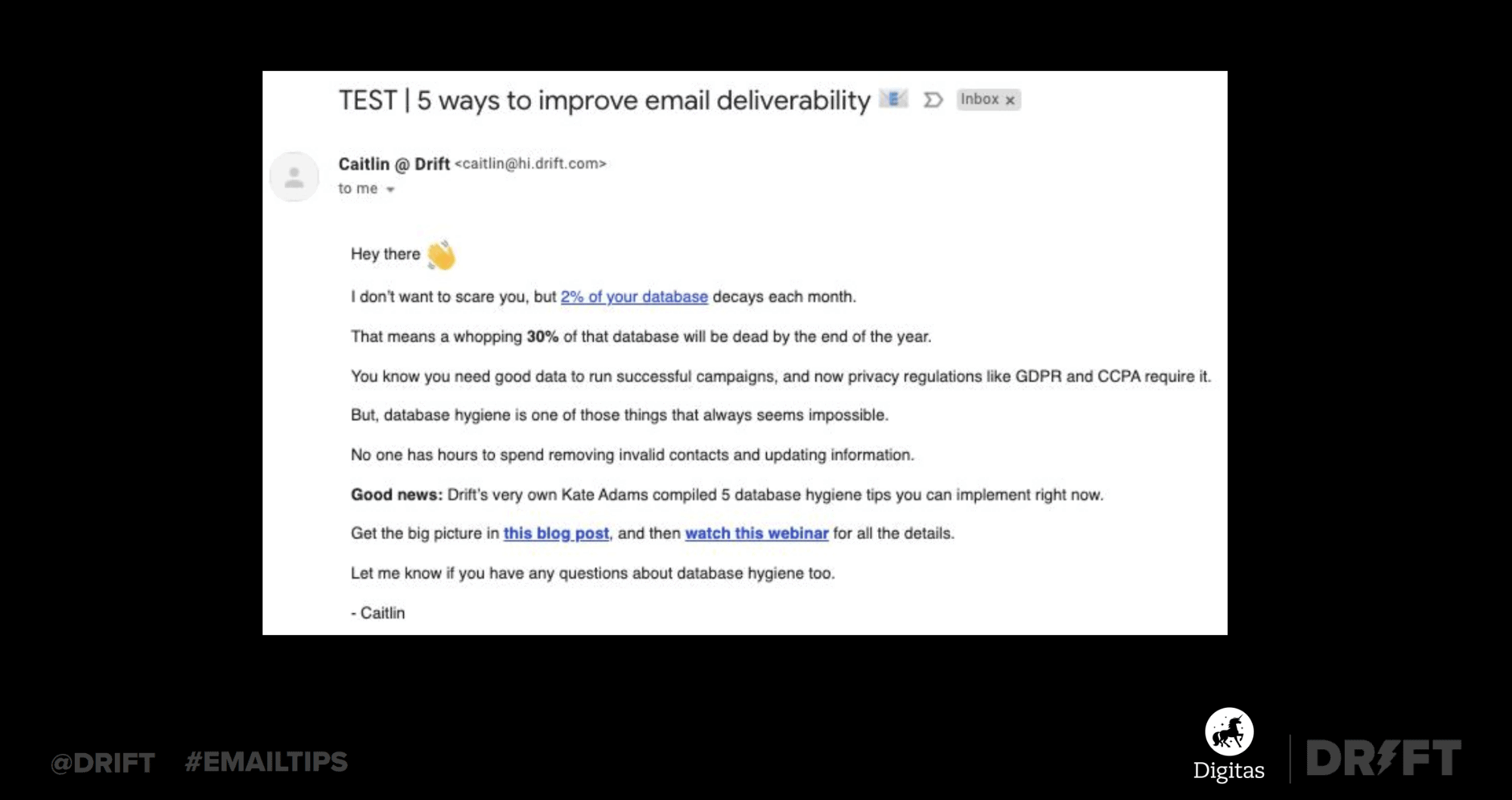
We’re highlighting a potential pain in the subject line, but the layout is what makes this stand out. Could this be a giant paragraph? Sure. But separating each line makes it easier to read and each sentence has that much greater of an impact.
4. Keep It All Consistent
If your emails didn’t have any design or logo, would your customers know it was from you? Your brand is more than colors or fonts. It’s about how you interact with customers at every level. When it comes to brands like Target and Home Depot – you know an email is from them – even if their logo isn’t in it because they have established their look, feel, and tone.
Here’s one we liked from Hulu:
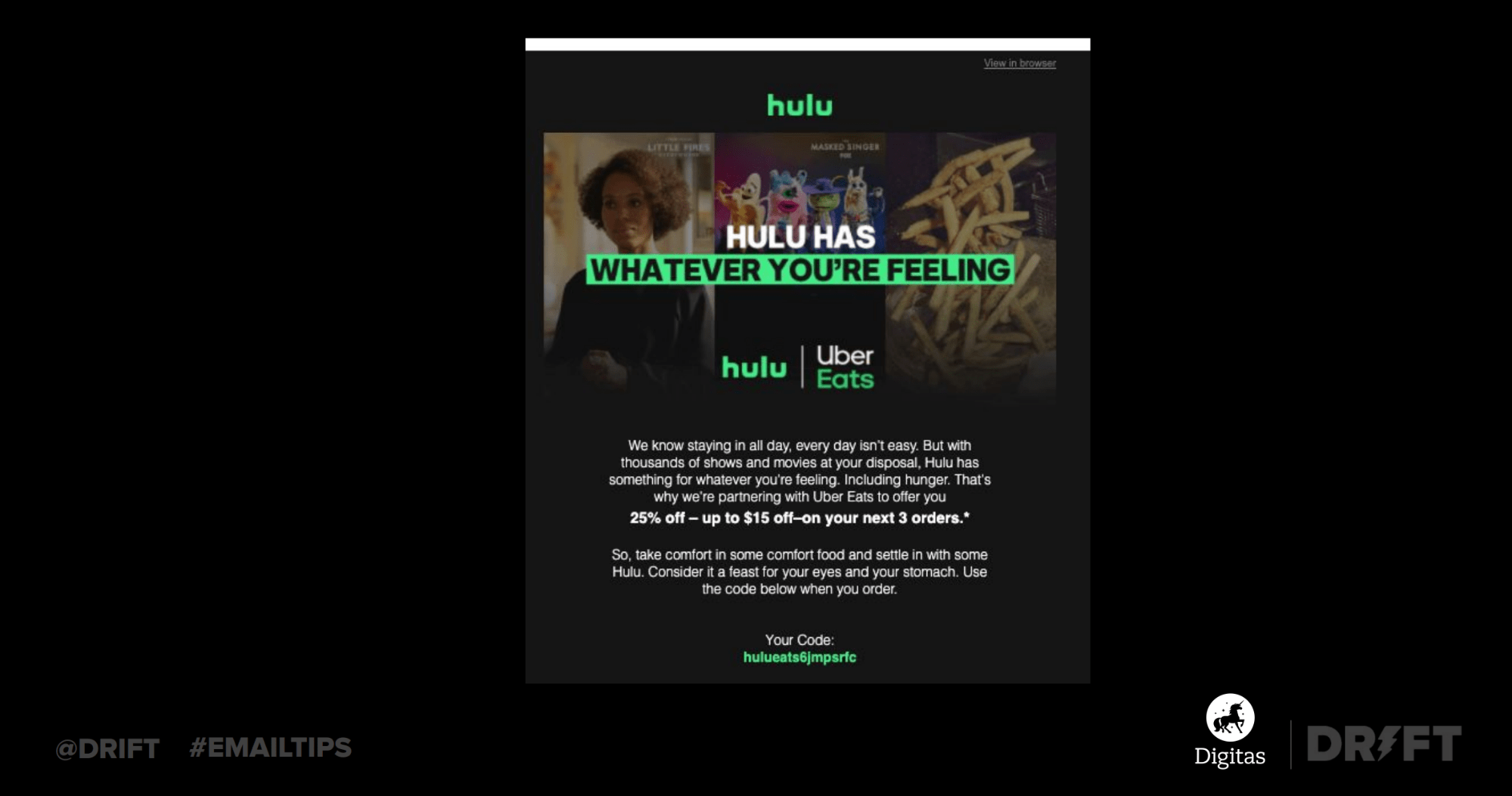
It’s quick, simple, and straightforward. It feels like the rest of Hulu’s emails.
5. Give a Clear Call to Action
Focus your message. That means you get to make one ask.
Yes, just one. Everyone’s been in that meeting where three people say, “Oh, but could we add…”
The answer is no 🙅♂️
Consolidate and condense so that each email does one thing. Not only will doing that make your emails that much more consistent, but it’ll also make it easier for your customers to convert.
Here’s how Digitas streamlined Delta’s emails:
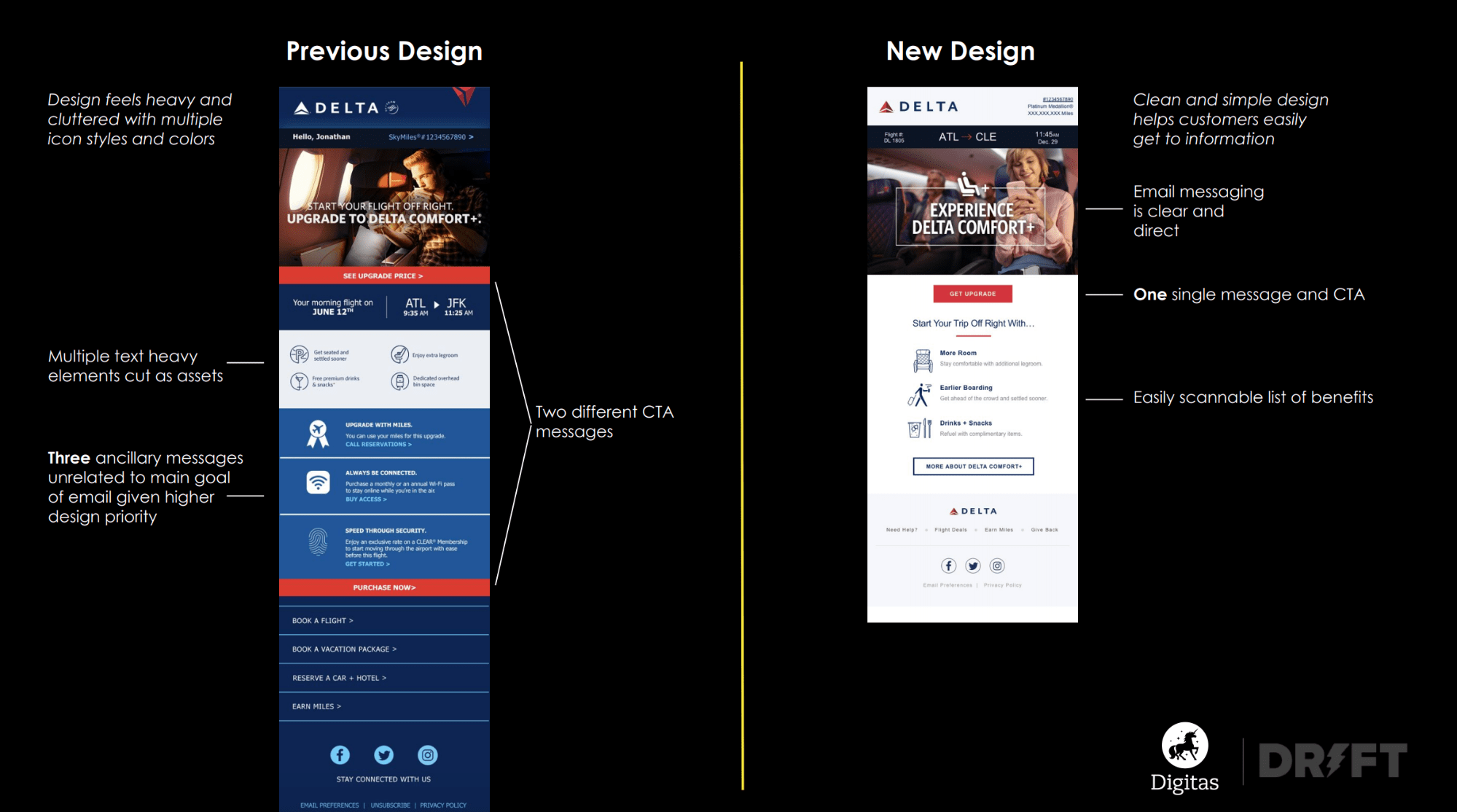
The creative has the same tone, look, and feel, but it’s so much simpler to read. Less friction makes it clear that there’s only one thing that customers should do when they read this email.
One Final Tip: Don’t Forget to Test, Test, and Test Again
It’s amazing to me how marketers still don’t test their emails.
Sales may have “always be closing.” I think marketers should have “always be testing.”
Not sure how to create a culture of testing and experimentation on your marketing team? Don’t worry, we’ve got that for you too 👇
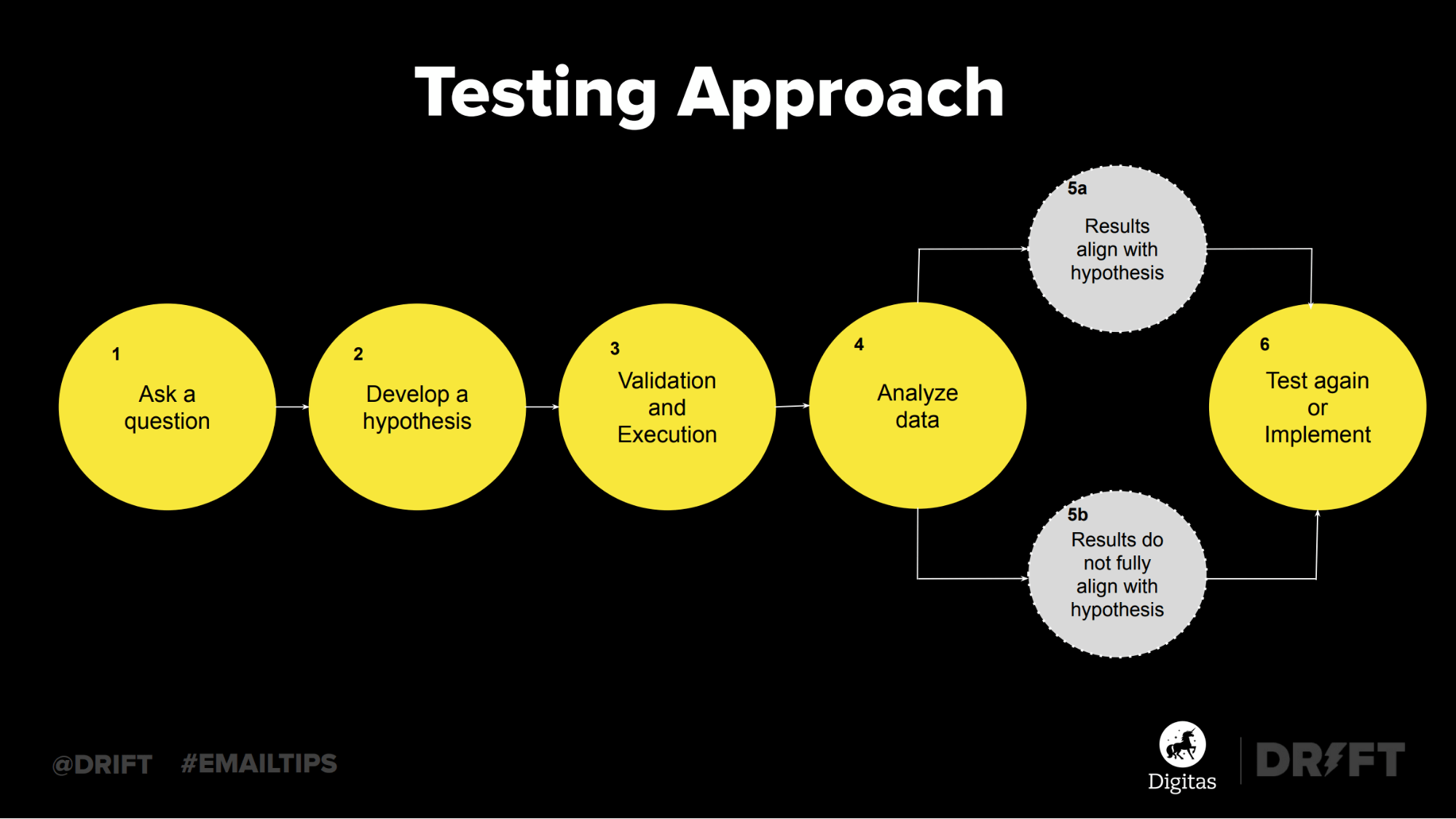
The biggest thing is to make sure you have a clear output. Test one thing at a time and ask a clear question. Remember science class in elementary school? It’s just like that.
- Ask a question: For example, which subject line will have a higher open rate?
- Develop a hypothesis: What do you think is going to happen?
- Validation and execution: Conduct the test until you get to statistical significance.
- Analyze the data: Did A or B win? Why?
- Run your next test.
Now, that was a simple example, but you can test way more than subject lines. You can test creative, calls-to-action, or entire emails against one another.
We use this as a framework for our entire email strategy.
Ask yourself, what are the three questions you want to answer in the next three months? Build your test plan off of those.
You could test…
Send dates and times:
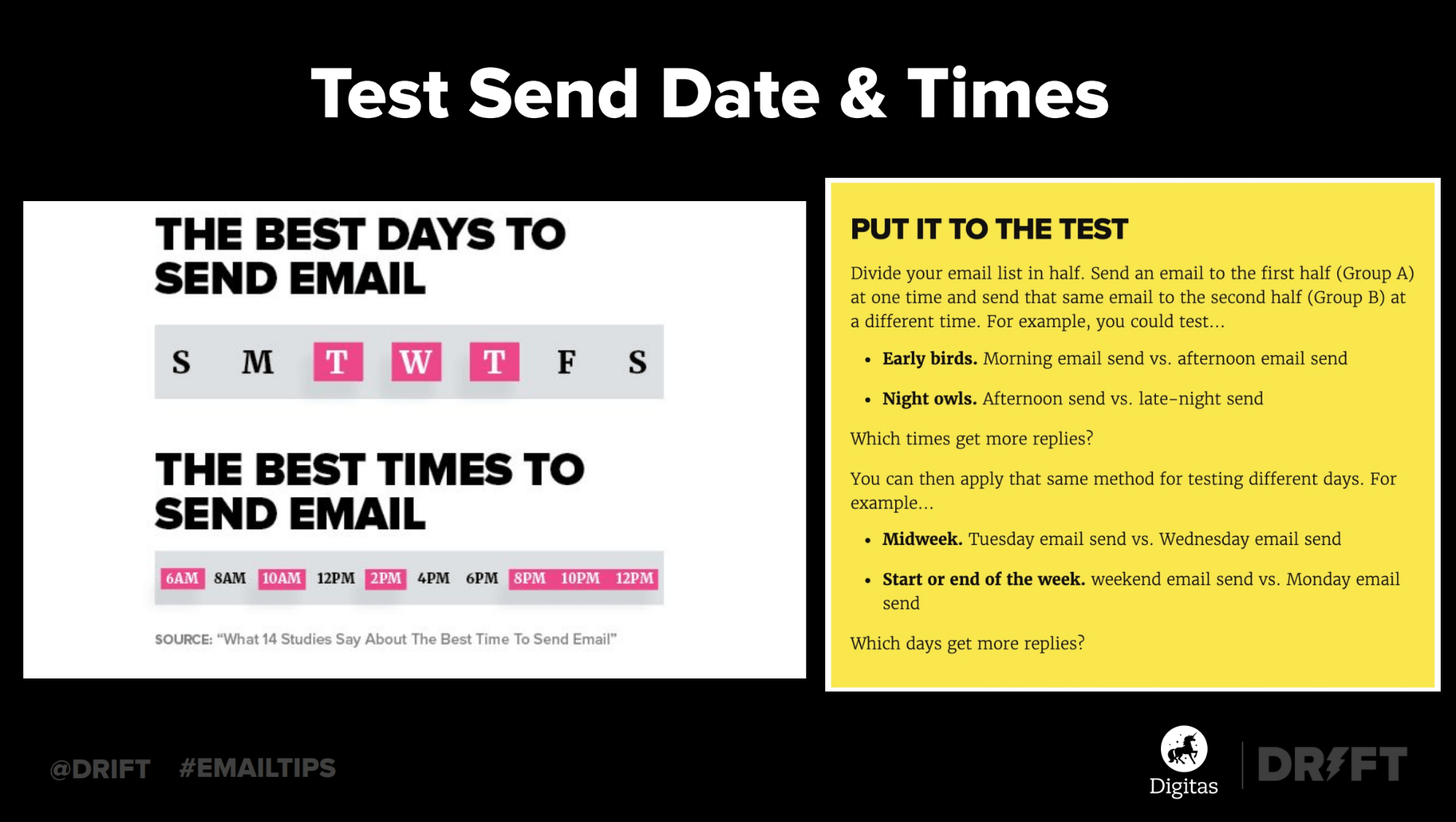
Subject lines:
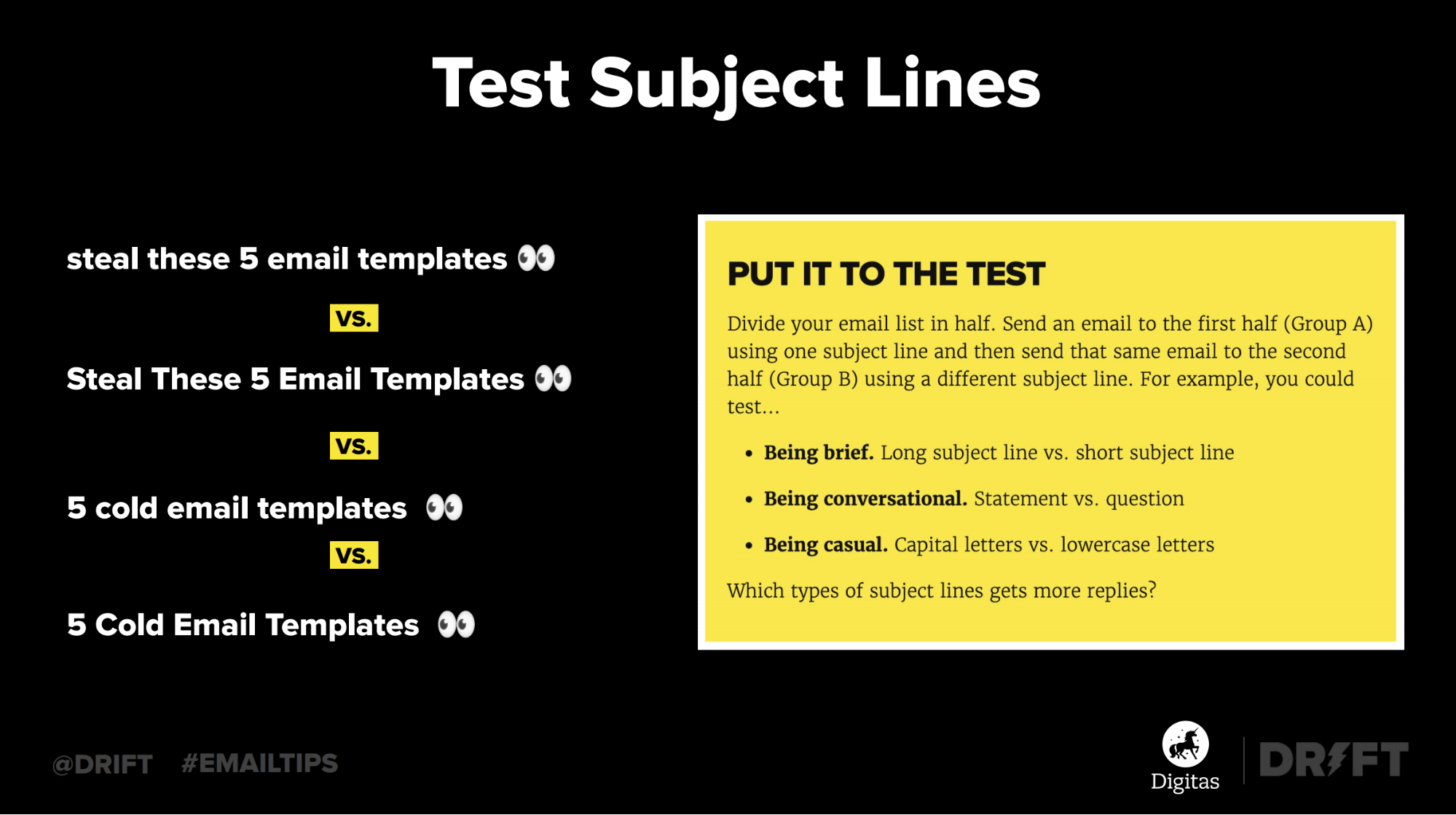
Or copy and design:
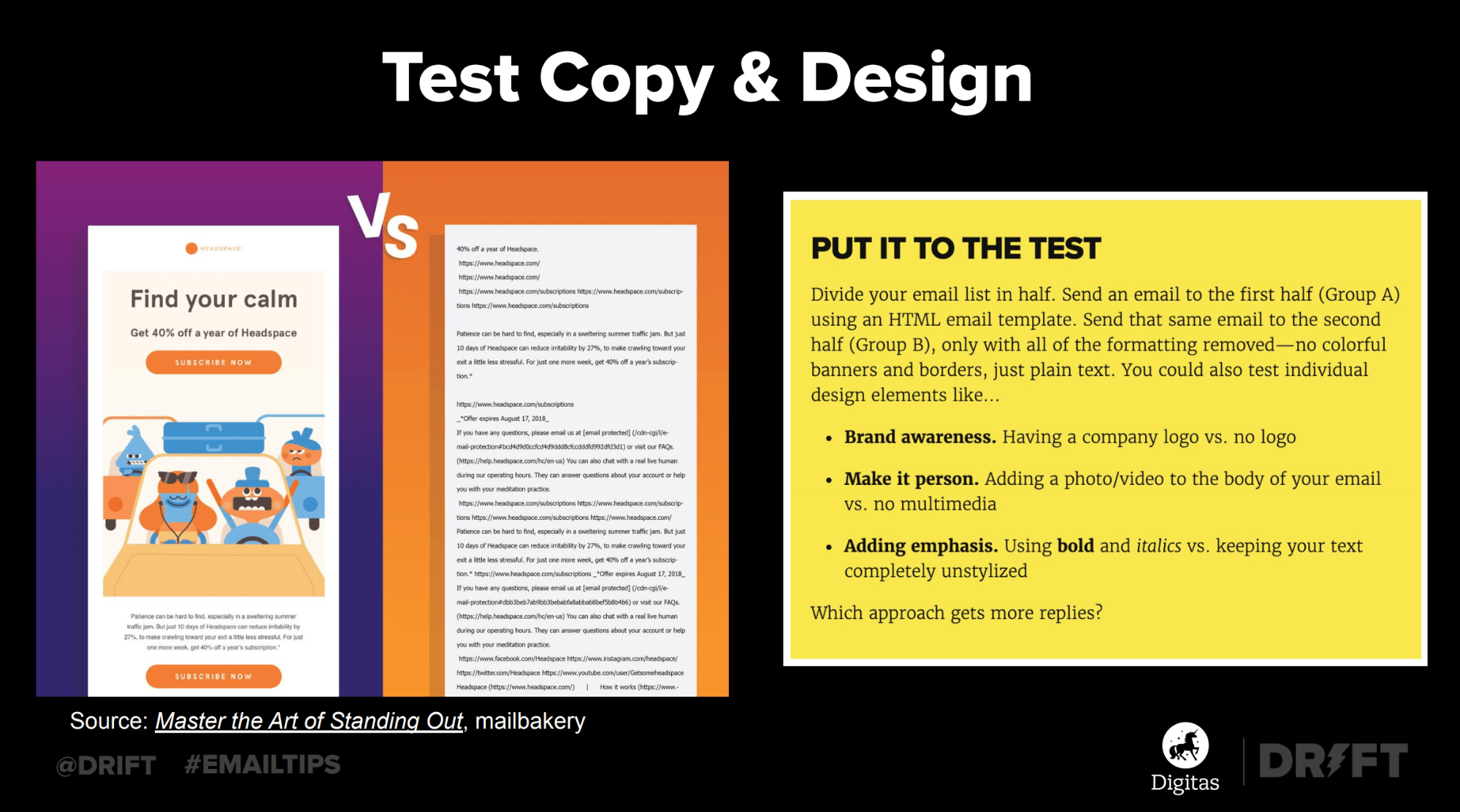
I’ll say it one more time: Email isn’t a channel – it’s a strategy.
Once you think of your email program like a strategy, you can think about your audience holistically. What happens after they purchase? You can deepen the relationship at every spot in the funnel.
To do this requires you to understand the motivations behind your audience, not just firmographic data.
Ask more questions. Get curious. Test. That’s the best way to continue to make your emails creative, exciting, and a delight for your customers and your prospects.




